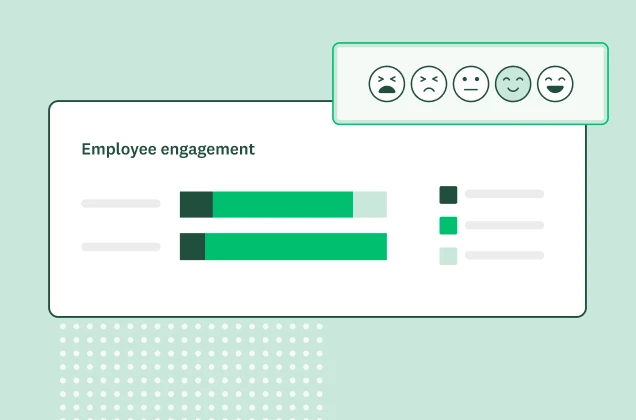
Our world is rapidly changing alongside new technologies, globalization, and breakthroughs in all fields of study, which makes training and continuing education becomes more of a priority than ever before.
Most people have taken some form of knowledge and skills training in their lifetimes. For example, new employees attend new hire training so they can acquire the skills they need to navigate their new workplace. Your job function may require you to take additional training to learn a new skill. Or, perhaps you’re just taking a short training to refresh your skills for a certification.
Training differs vastly from a traditional course of study, as participants and students expect to see improvements in their abilities almost immediately after a training session. A client in a physical fitness program, a student in a sales training course, or a participant in a Yoga program will discontinue their attendance if they do not see progress.No matter the use case, everyone being trained wants to utilize their skills as soon as possible.
Improve your employee experience
SurveyMonkey Enterprise offers solutions for enterprises looking to make holistic changes to their employee experience.
Questionnaires and quizzes are a indispensable tools for training professionals, especially when you use them with models for assessing training effectiveness. You can apply the feedback you gather through surveys to evaluate training programs, course offerings and instructors; target specific skills development for individuals or groups; and plan focused training for any field or area of instruction.
What are training surveys?
Training surveys are an essential part of your training program. Gathering feedback from participants in pre-training and post-training helps you measure the effectiveness of your sessions and identify areas for improvement. You can also use the data to improve future training.
Pre-training surveys can measure existing knowledge of the participants, or help manage expectations for the training sessions if used before them. The survey data can help you plan that training material and help with implementation.
Post-training surveys help you see if your training sessions met expectations, provided value to participants, and whether it was effective overall.
Benefits of training surveys
- Investment in employee knowledge
- Gather measurable learning outcomes
- Track how training impacts employee performance
- Pinpoint areas in need of improvement
- Increase employee engagement
What can training surveys tell us?
Pre-training surveys
Pre-training survey questions assist you in gathering information on running successful training sessions. You’ll find out:
- What training is needed and if there knowledge gaps you need to fill
- The learning expectations participants have and can tailor training with these expectations in mind
- Particular demographics of the group you are presenting to, such as whether they work full or part-time, job title, and job duties
- Any special needs participants may have that require assistive equipment or training delivery, etc
- Preferences for how you instruct the training, such as video for visual learners, while lectures for auditory learners, and demonstrations for tactile learners
- Knowledge gaps with the training material so you can focus on areas for improvement and avoid redundancies
Demographics help you understand your audience, their available time commitment, and their place in your organization. It is unnecessary to ask intrusive demographic questions such as ethnicity, gender identification, or age unless it is somehow relevant to the subject of the training. Learn more about demographic surveys.
With this information, you can structure your training appropriately to effectively meet the needs of your group.
Post-training surveys
Post-training surveys measure the outcomes of your training sessions. You can find out if you fulfilled your training goals and use the data to inform your next training. With a post-training survey, you’ll discover:
- Which trainings were popular
If a particular training is not well-attended or positively rated by attendees, evaluate whether it is a necessary part of your training schedule. Popular training can be updated and offered more regularly.
- Which instructors or trainers attract the highest numbers
This is a good indicator of the most informative and effective trainers. This should be your impetus to find out what they do differently than other instructors so you can offer feedback and improvement opportunities to all trainers.
- Any barriers to learning
Was there anything that prevented the group from being fully engaged in the training? Identify barriers and strategies to overcome them.
- Adjustments to improve future sessions
Analyzing your data should reveal what improvements you can make to your future training sessions to make them more informative, effective, and attractive to attendees.
- If needs were met
Ask post-training knowledge questions to assess whether participants acquired the knowledge or skills that were identified in your training goals.
Analyzing your post-survey data will offer valuable insights into planning future training sessions.
The 3 stages of training evaluation surveys
To obtain a thorough understanding of the impact of your training, try breaking your survey down into 3 stages:
- Before training: Find out your participants’ existing knowledge, expectations for learning, and thoughts on the signup process.
- During training: Discover thoughts on your course content, structure, and delivery.
- After training: Obtain overall course evaluation, learner satisfaction, and feedback on your follow-up process.
How to use surveys to boost training effectiveness
Use surveys to explore what training to offer, the effectiveness of the training you’re delivering, and whether students feel they are acquiring the skills they desire.
Pre-training and post-training skills assessment
Pre-training skills assessments should be run before training sessions. This will establish what your participants already know, their expectations for the training, and any learning needs and preferences. This information can be used to determine how you run the training, information delivery methods, and content.
Post-training skills assessments should be given as soon as possible—no more than 24 hours—after the training to collect feedback while the training is fresh in participants’ minds. The data from this survey can be used to find out learner satisfaction and experience with the training. Our training course evaluation template is a great place to start.
Compare data from pre- and post-training skills assessments to assess learning gains from your training.
Ongoing progress toward goals
Poll individuals at the outset of a longer training program to baseline where they are in relation to their goals. Chart their progress: Throughout training, ask students to assess their progress. Deliver your survey on mobile devices in the training environment for near real-time feedback or on social media to broadcast their achievements to their network.
Trainee satisfaction with course or program
Find out if the training you’re delivering is engaging and effective. Are you meeting the expectations of participants? Are they getting the instruction or information they thought they would? Use this feedback for continuous improvement.
Instructor or teacher effectiveness
Two trainers might deliver the same course material quite differently—and that diversity allows you to attract more students. Still, you want to know that all trainers are capably delivering training. Use surveys to gather students’ opinions of teacher effectiveness.
Get a start on your instructor evaluations with our course evaluation survey template and our university instructor evaluation survey template. Take a look at our education surveys for other ways to lead assessments.
Career training and development
What do students or employees think of your organization’s job training and development programs? Do offerings support their career goals and ambitions? What education programs do they need to meet their objectives?
Find out if your company is providing ample training for employees to learn and grow on the job. Use our career development survey template as a starting point to determine whether you are helping employees reach their full potential.
Training needs and opportunities
Could seniors in your community use a hands-on technology course? Are newbie parents interested in parenting classes? Use surveys in your community, workplace, healthcare or fitness organization to plan classes and training that will benefit your residents, employees, patients or clients. Test potential offerings using SurveyMonkey Audience, which gives you access to millions of respondents similar to your target audiences.
5 quick tips to improve survey response rates
1. Be quick
If your survey is short and sweet, there’s a greater chance more respondents will complete it.
2. Provide an option for unstructured feedback
Give people the opportunity to give you additional thoughts and other feedback by choosing from the multiple question types including some open-ended questions with text boxes for unstructured responses.
3. Keep it casual
Don’t use corporate-speak or language that’s stuffy or highly technical. Keep your tone conversational.
4. Vary the question styles
Avoid respondent boredom by offering a wide variety of question styles. Be sure to include some open-ended questions for personalized answers and unstructured feedback.
5. Test the survey
Send your survey to some colleagues to test for glitches or questions that require clarification. Fix any issues before sending the survey to your list of respondents.
Sample training survey questions
We’ve put together some examples of training survey questions to highlight some of the types of information you can collect.
Pre-training survey questions
As you recall, pre-training questions establish existing knowledge and expectations for the training session.
Measuring knowledge
As an example, if your seminar included training about SMART goals, a pre-training question can tell you what the participants already know.
What does SMART stand for in terms of goal-setting?
- Satisfying, Measurable, Achievable, Realistic, Timely
- Specific, Measurable, Achievable, Realistic, Timely
- Smart, Mnemonic, Actionable, Rudimentary, Tested
- Satisfactory, Memorable, Achievable, Relevant, Tangible
- Specific, Measurable, Accurate, Realistic, Timely
Measuring expectations
Use a comment box for participants to offer answers in their own words rather than choosing from a pre-populated list.
What are you hoping to learn from this training?
Measuring preparedness
Use survey questions to determine whether your participants have any accessibility needs for your training, so you can make any preparations.
Do you have all the tools you need to participate in the training?
- Yes
- No
- If no, please explain.
Questions for during the training
During your training, use surveys to ensure you’re meeting participants’ needs and expectations.
Measuring content
Check to see if your content is working by giving a short survey between sessions or lessons.
The training content met my expectations.
- Strongly disagree
- Disagree
- Neither agree nor disagree
- Agree
- Strongly agree
Measuring structure
Determine whether the training structure is in line with what participants wanted.
On a scale of 0-10, 0 being terrible and 10 being fantastic, how well was the training structured?
Evaluating instructors
Get feedback on the training’s presentation, including if the instructor was engaging.
How engaging was your instructor?
Not engaging at all | Extremely engaging
Evaluating course timing
Find out if the training was too long, too short, or just right for participants.
How satisfied were you with the length of the training course?
- Very dissatisfied
- Dissatisfied
- Neutral
- Satisfied
- Very satisfied
Evaluating learning experience and course design
During the training, find out if the provided technology or materials worked well for participants.
Was the learning platform easy to navigate?
- Yes
- No
Post-training survey questions
After the training is completed, post-training surveys will help you gather actionable feedback to use in planning future sessions.
Measuring knowledge
Returning to our pre-training example, if you covered SMART goals in your training, you can find out if participants were engaged and can remember the content.
What does the M in SMART goals stand for?
- Memorable
- Multiple
- Measurable
- Main
- Multipurpose
Measuring experience
Find out if your participants’ preferences about supplemental materials.
Would you have liked to receive course materials in print rather than online?
- Yes
- No
Measuring delivery
This is another question that examines the trainer’s presentation techniques.
Was the course content presented clearly?
- Yes
- No
- Sort of
- Don’t know
Measuring content
You can plan the details of future training sessions based on answers to these types of questions.
How did the training content meet or not meet your expectations?
Sample training templates (some content available only in English)
The list of potential training topics is endless. SurveyMonkey offers many surveys that can be used as-is or customized to cover many areas of training. Here are a few templates you might use with individuals, community residents, students and their parents, and employees.
Customer satisfaction and customer service
What do your customers think of their experience with your business or customer service representatives? Use this feedback to explore potential areas of customer-service training for employees.
Learning support and parent engagement
Find out how parents support students’ learning at home or engage with their children’s teachers. Use this feedback to develop training that helps parents guide their children to develop good study habits, handle problems or challenges at school, or achieve specific learning goals.
University teaching assistant evaluation
Ask students for their feedback on a teaching assistant’s course. Use this information to develop general training for teaching assistants across the university, or specific training for those in a particular department or group.
Employee and management performance
Identify opportunities for improving both the hard and soft skill sets of employees and managers. Ask managers to assess key aspects of employee performance, and request employees’ feedback on the corporate management team. Use this feedback to shape your workplace training offerings.
Department Performance and Team Performance
Survey management teams about the key capabilities of their departments or teams to pinpoint areas for training to improve skill levels and professionalism, good communication, and positive client or customer interactions.
SurveyMonkey has 150+ survey templates, written by experts, to help you will all of your survey needs. See how SurveyMonkey can power your curiosity.
Discover more resources

HR toolkit: Make employee experience your competitive advantage
HR leaders can use this toolkit to help drive exceptional employee experiences.

Get the employee information you need with online employment forms
Hire top talent, speed up the onboarding process, and manage your workforce with a custom employment form. Start creating forms today with our employment form builder and templates.

Master MaxDiff: Uncover your audience's priorities in 4 easy steps
Learn how to use MaxDiff in simple terms to get an advanced understanding of your audience's preferences.

Curiosity Week at SurveyMonkey: A closer look
How SurveyMonkey listens to and supports employees through professional development with Curiosity Week.